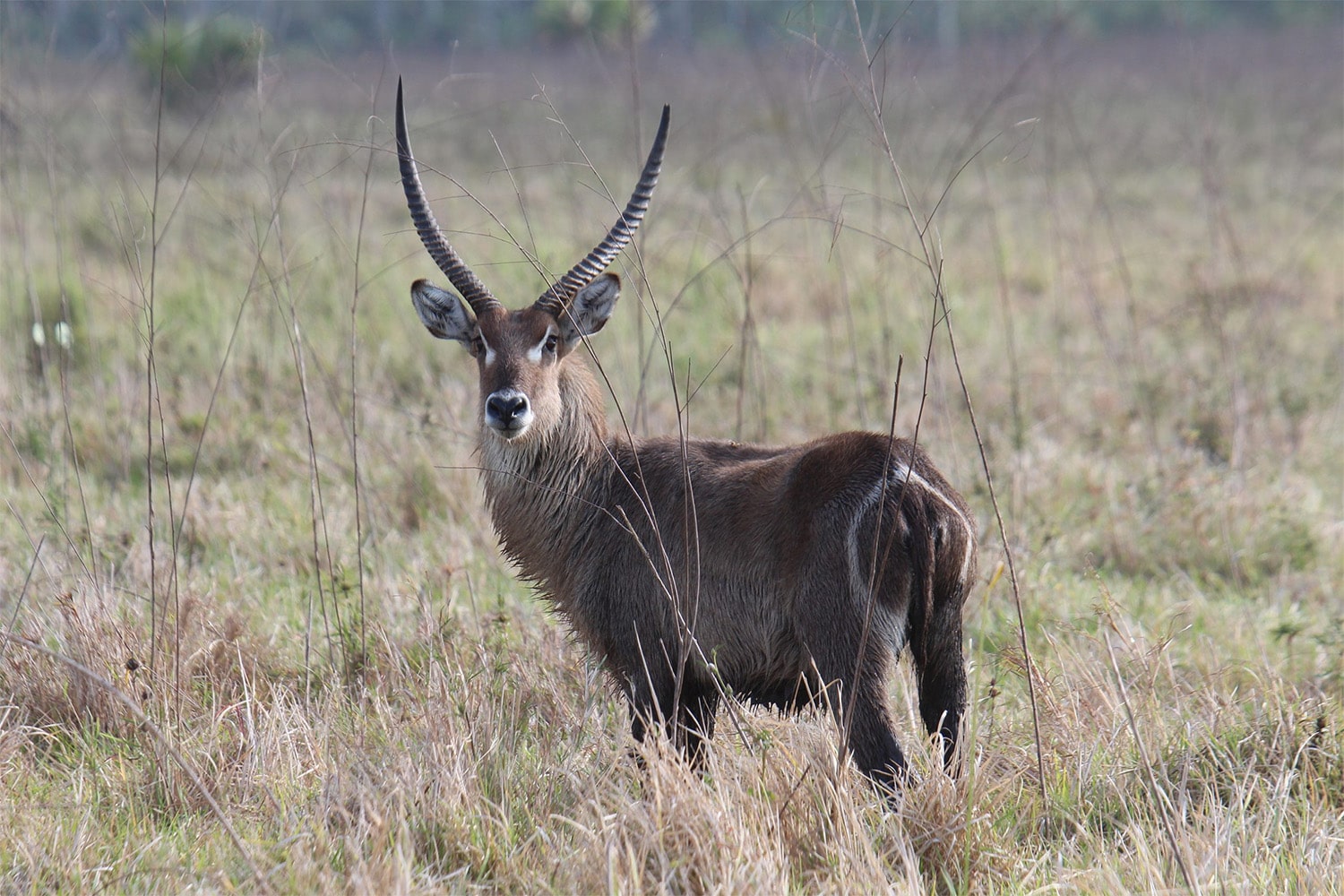
33 interesting facts about waterbucks
- 👁️ 386
Waterbucks are a fascinating and often overlooked species of antelope native to the grassland and woodland areas of sub-Saharan Africa. Known for their distinctive physical features and semi-aquatic habits, waterbucks play a crucial role in their ecosystems. Despite facing threats from predators and habitat loss, these resilient animals continue to thrive in protected areas and reserves. Waterbucks exhibit unique behaviors and adaptations that allow them to navigate the challenges of their environments, making them a subject of interest for wildlife enthusiasts and researchers alike. Here are 33 interesting and informative facts about waterbucks that shed light on their characteristics, behavior, and survival strategies.
- Waterbucks belong to the genus Kobus, which includes several species of African antelopes.
- There are two main types of waterbucks: the Common waterbuck and the Defassa waterbuck.
- Waterbucks have a shaggy coat, which can range from brown to gray in color.
- They are known for the distinctive white ring on their rumps, although this is less pronounced or absent in some populations.
- Male waterbucks have long, spiral horns, which can grow up to 99 cm (39 inches) in length.
- These antelopes are larger than many other species, with males weighing up to 300 kg (660 lbs) and females up to 200 kg (440 lbs).
- Waterbucks have a glandular skin that secretes an oily substance, giving their coat a greasy feel and musky smell.
- This oily secretion is believed to be waterproofing, helping their fur repel water.
- They are predominantly grazers, feeding mainly on grasses near water sources.
- Waterbucks are not territorial but do establish dominance hierarchies within their groups.
- They are semi-aquatic and often found near rivers, lakes, and wetlands.
- When threatened by predators, waterbucks will often retreat into water bodies where they are strong swimmers.
- Predators of waterbucks include lions, leopards, and hyenas.
- Female waterbucks give birth to a single calf after a gestation period of about 280 days.
- Calves are hidden in vegetation for the first few weeks of life to protect them from predators.
- Waterbucks have a lifespan of up to 18 years in the wild.
- They are most active during the cooler parts of the day, such as dawn and dusk.
- Waterbucks can form herds of up to 30 individuals, though smaller groups are more common.
- The social structure of waterbucks is fluid, with individuals joining and leaving herds.
- They rely heavily on water and rarely venture far from a reliable water source.
- Waterbucks communicate through vocalizations, scent markings, and visual displays.
- Despite their dependence on water, waterbucks do not drink excessively, consuming less water per day than many other herbivores.
- Their kidneys are highly efficient, allowing them to conserve water and survive in arid conditions.
- Waterbucks are more resistant to certain diseases, such as rinderpest, than other antelope species.
- The primary mating season for waterbucks falls between April and June in southern populations, but it can vary depending on the location.
- Males engage in ritualized displays and combat to compete for access to females.
- Waterbucks have few natural drinking spots and will often create paths to water, which are used by other species.
- Defassa waterbucks are named after the Defassa region in West Africa, where they were first identified.
- Waterbuck populations are threatened by habitat loss, human encroachment, and competition with livestock.
- They have been successfully reintroduced in areas where they had previously disappeared.
- Waterbucks are a popular species for eco-tourism and wildlife photography.
- They play an important role in their ecosystems as prey for large carnivores and as grazers that help maintain grassland health.
- Conservation efforts for waterbucks focus on habitat protection, anti-poaching measures, and ecological research.
Waterbucks are remarkable creatures that demonstrate the beauty and complexity of African wildlife. Their adaptability, social structures, and interactions with the environment highlight the interconnectedness of ecosystems. By understanding and appreciating waterbucks, we can better grasp the importance of conservation efforts aimed at protecting these and other species. Their survival is not only crucial for maintaining biodiversity but also for ensuring the health and balance of their natural habitats. As we continue to learn about waterbucks, their resilience serves as a reminder of nature’s wonders and the need to safeguard our planet’s precious wildlife.
Waterbucks are a fascinating and often overlooked species of antelope native to the grassland and woodland areas of sub-Saharan Africa. Known for their distinctive physical features and semi-aquatic habits, waterbucks play a crucial role in their ecosystems. Despite facing threats from predators and habitat loss, these resilient animals continue to…